Abstract
The effect of passively administered antibody on the humoral immune response of BALB/c mice to antigenic determinants on human cells has been examined. Antiserum raised by immunizing mice with the human leukaemic cell line K562, which lacks HLA-A,B,C antigens, was administered to mice, together with the HLA-A,B,C-positive cell line, BALM-1. The antibody response to the unique antigen was assessed by measuring the ability of the resultant antiserum to inhibit the binding to BALM-1 cells of a labelled monoclonal antibody, 7B6, which is specific for a monomorphic HLA-A,B,C determinant. As an indication of the immune response to antigens common to K562 and BALM-1, the ability of the same antiserum to inhibit the binding of monoclonal antibody 6B1, which detects an epitope common to both cell lines, was measured. Passive antibody to K562 blocked the immune response of mice to the common antigen on BALM-1 cells. However, the response to the antigen not recognized by the passive antibody was unaffected, even though the two antigens were present on the same immunizing cell. Thus, the effect of passive antibody was 'determinant specific'. Similar results were obtained, irrespective of whether the i.v. or i.p. route of immunization was used, and whether the passive antibody was adsorbed onto the immunizing cells prior to injection, or administered separately. The blocking of the immune response did not depend on simple masking of the antigenic determinants by the passive antibody, since non-saturating amounts of antibody were effective. In addition, blocking activity was dependent on antibody class and on an intact Fc region. The latter considerations also imply that the outcome of passive antibody administration in this system was determined by factors other than the ability of the antigen-antibody complexes to interact directly with B cells, and indicate the importance of antigen processing and/or a mechanism such as antigen-reactive cell opsonization.
Full text
PDF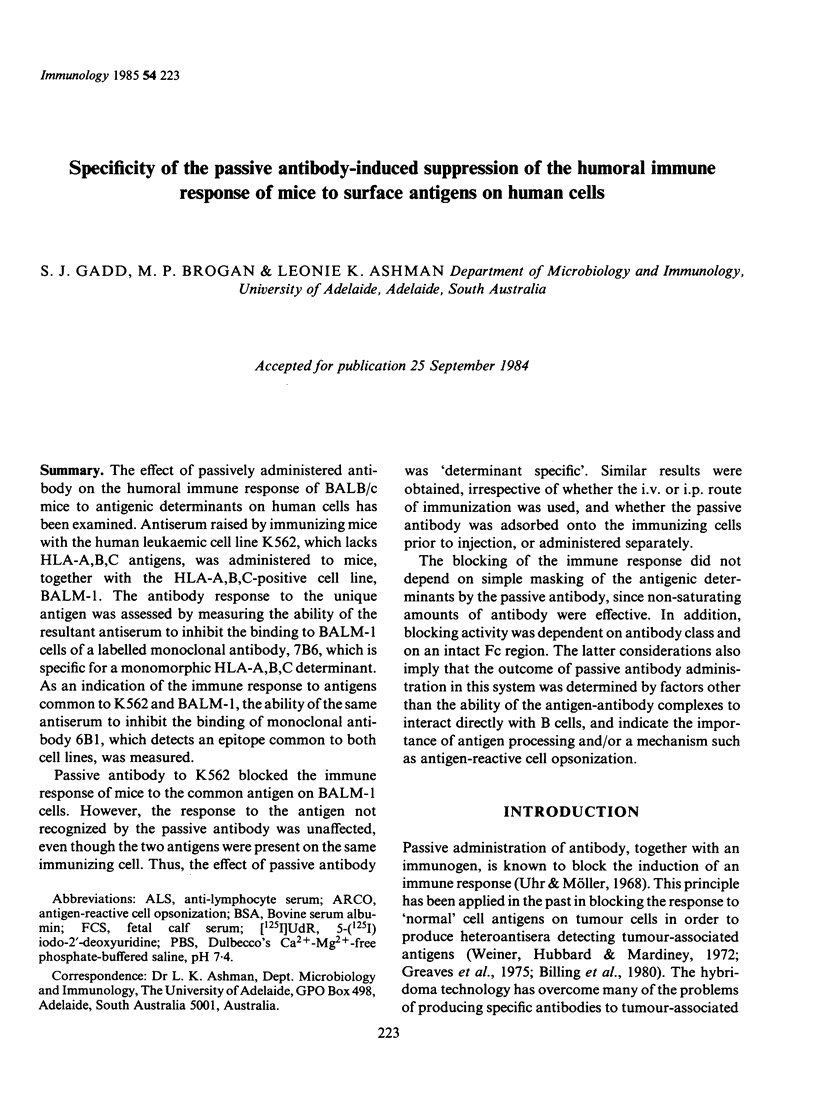
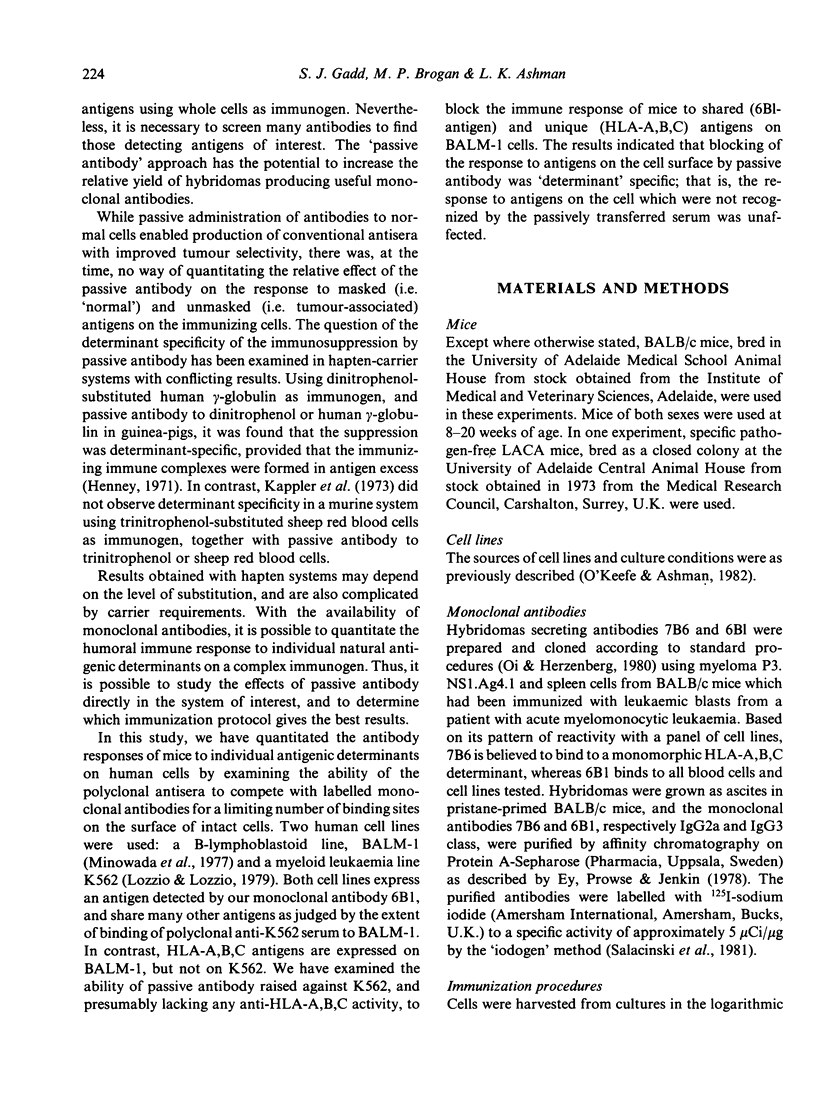
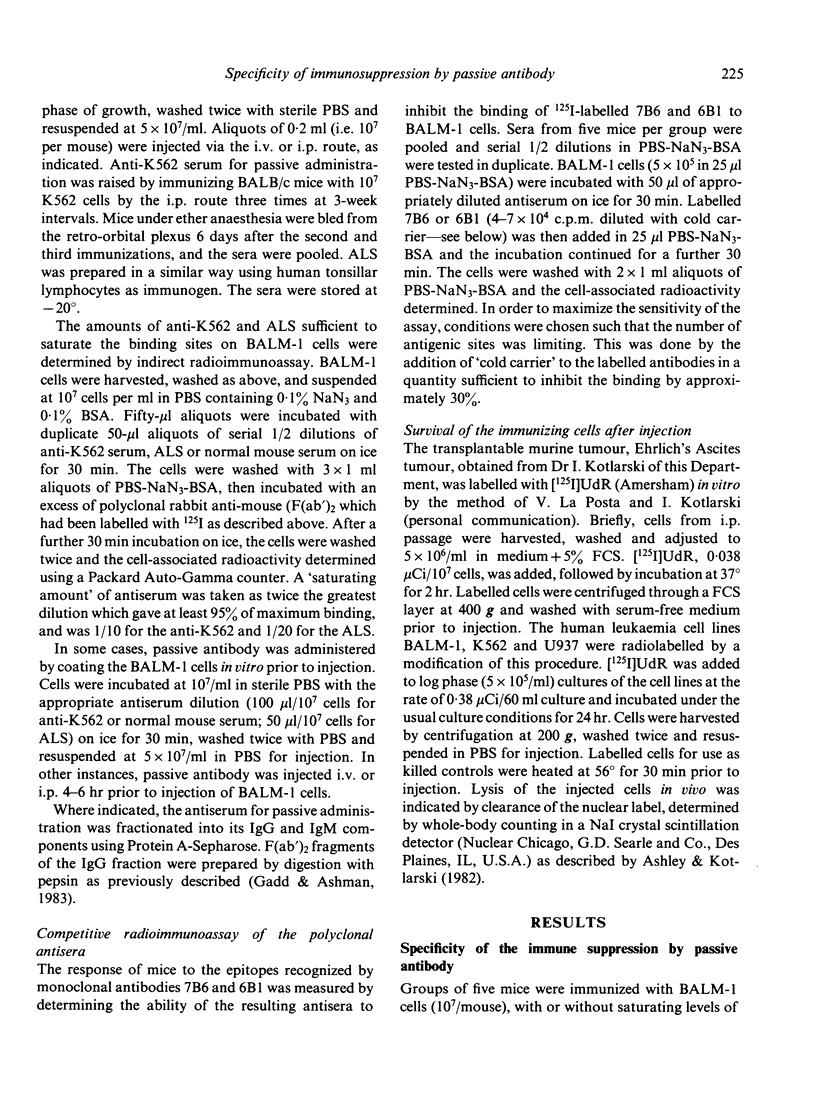
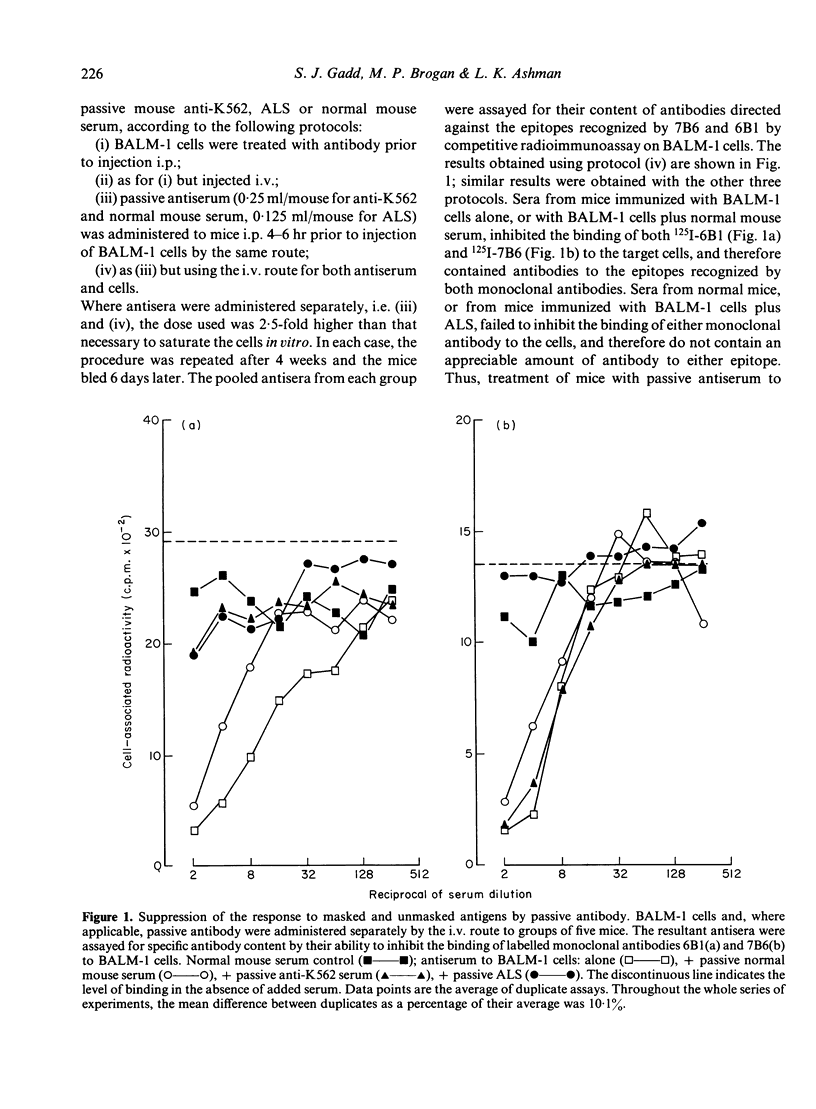
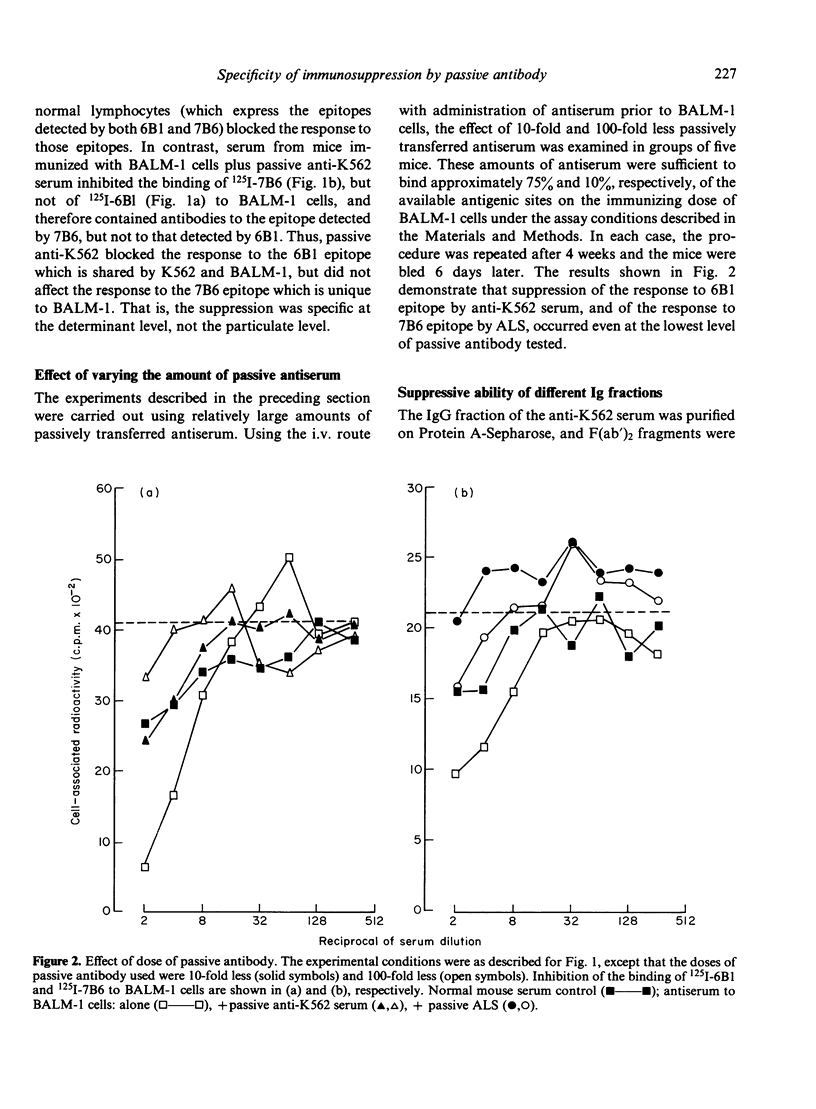
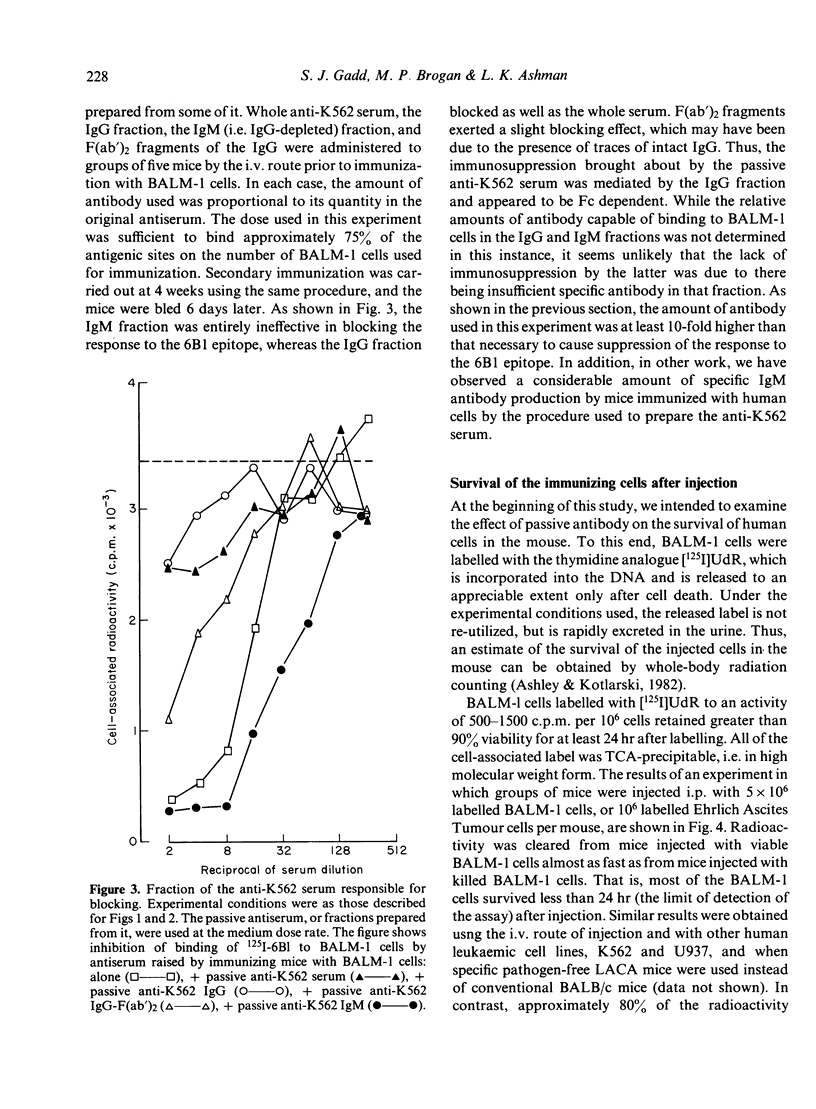
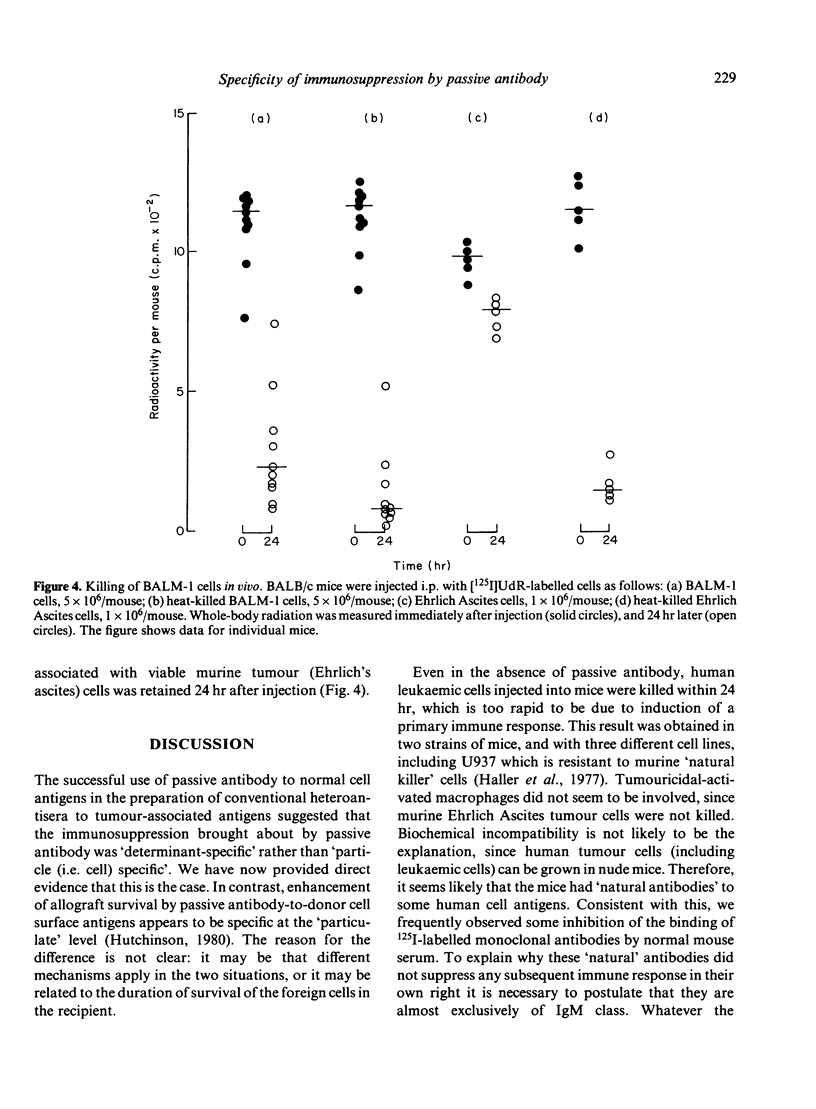
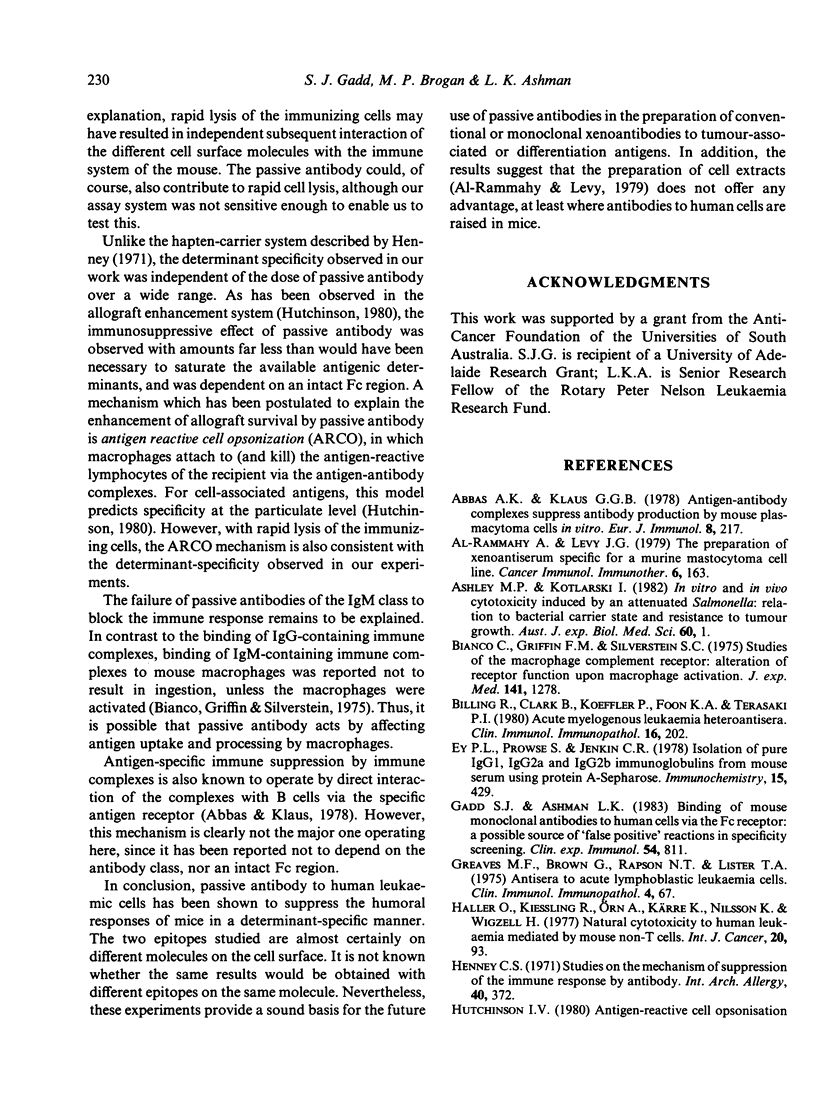
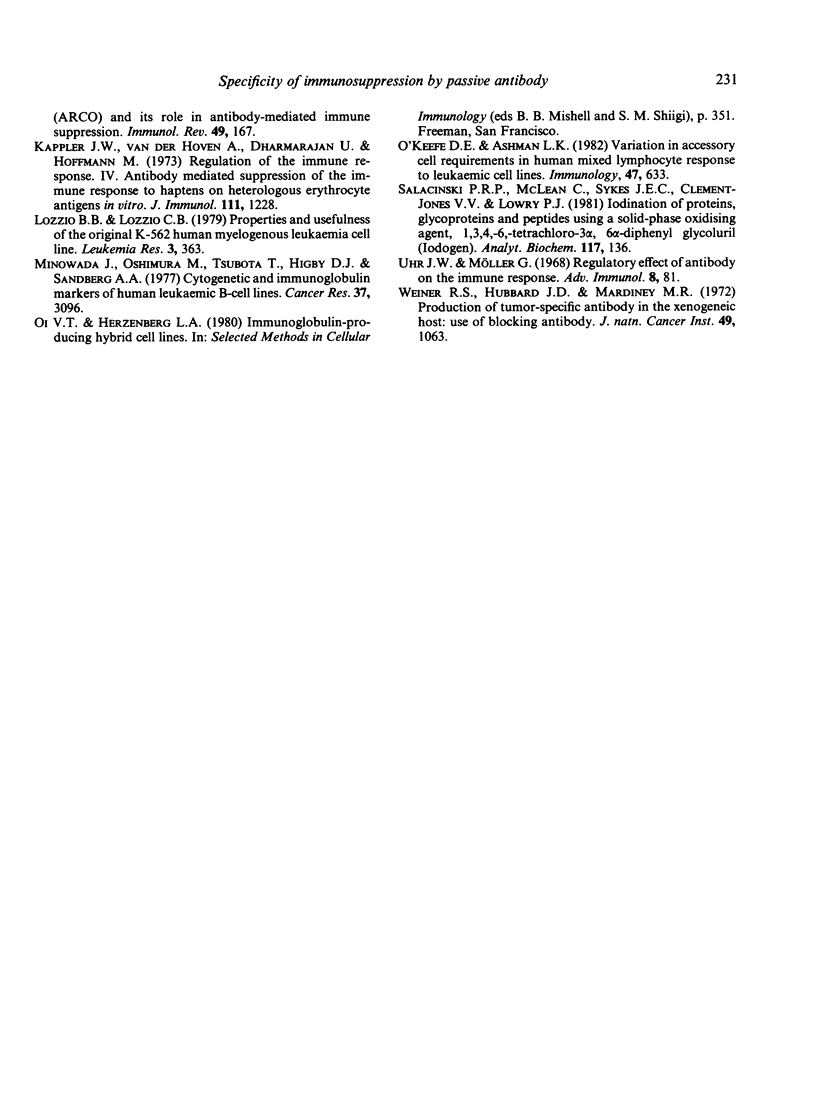
Selected References
These references are in PubMed. This may not be the complete list of references from this article.
- Abbas A. K., Klaus G. G. Antigen-antibody complexes suppress antibody production by mouse plasmacytoma cells in vitro. Eur J Immunol. 1978 Mar;8(3):217–220. doi: 10.1002/eji.1830080315. [DOI] [PubMed] [Google Scholar]
- Ashley M. P., Kotlarski I. In vitro and in vivo cytotoxicity induced by an attenuated Salmonella: relation to bacterial carrier state and resistance to tumour growth. Aust J Exp Biol Med Sci. 1982 Feb;60(Pt 1):1–21. doi: 10.1038/icb.1982.1. [DOI] [PubMed] [Google Scholar]
- Bianco C., Griffin F. M., Jr, Silverstein S. C. Studies of the macrophage complement receptor. Alteration of receptor function upon macrophage activation. J Exp Med. 1975 Jun 1;141(6):1278–1290. doi: 10.1084/jem.141.6.1278. [DOI] [PMC free article] [PubMed] [Google Scholar]
- Billing R., Clark B., Koeffler P., Foon K. A., Terasaki P. I. Acute myelogenous leukemia heteroantisera. Clin Immunol Immunopathol. 1980 Jun;16(2):202–210. doi: 10.1016/0090-1229(80)90204-4. [DOI] [PubMed] [Google Scholar]
- Ey P. L., Prowse S. J., Jenkin C. R. Isolation of pure IgG1, IgG2a and IgG2b immunoglobulins from mouse serum using protein A-sepharose. Immunochemistry. 1978 Jul;15(7):429–436. doi: 10.1016/0161-5890(78)90070-6. [DOI] [PubMed] [Google Scholar]
- Gadd S. J., Ashman L. K. Binding of mouse monoclonal antibodies to human leukaemic cells via the Fc receptor: a possible source of 'false positive' reactions in specificity screening. Clin Exp Immunol. 1983 Dec;54(3):811–818. [PMC free article] [PubMed] [Google Scholar]
- Greaves M. F., Brown G., Rapson N. T., Lister T. A. Antisera to acute lymphoblastic leukemia cells. Clin Immunol Immunopathol. 1975 May;4(1):67–84. doi: 10.1016/0090-1229(75)90041-0. [DOI] [PubMed] [Google Scholar]
- Henney C. S. Studies on the mechanism of suppression of the immune response by antibody. Int Arch Allergy Appl Immunol. 1971;40(3):372–381. doi: 10.1159/000230420. [DOI] [PubMed] [Google Scholar]
- Hutchinson I. V. Antigen-reactive cell opsonization (ARCO) and its role in antibody-mediated immune suppression. Immunol Rev. 1980;49:167–197. doi: 10.1111/j.1600-065x.1980.tb00430.x. [DOI] [PubMed] [Google Scholar]
- Kappler J. W., van der Hoven A., Dharmarajan U., Hoffmann M. Regulation of the immune response. IV. Antibody-mediated suppression of the immune response to haptens and heterologous erythrocyte antigens in vitro. J Immunol. 1973 Oct;111(4):1228–1235. [PubMed] [Google Scholar]
- Lozzio B. B., Lozzio C. B. Properties and usefulness of the original K-562 human myelogenous leukemia cell line. Leuk Res. 1979;3(6):363–370. doi: 10.1016/0145-2126(79)90033-x. [DOI] [PubMed] [Google Scholar]
- Minowada J., Oshimura M., Tsubota T., Higby D. J., Sandberg A. A. Cytogenetic and immunoglobulin markers of human leukemic B-cell lines. Cancer Res. 1977 Sep;37(9):3096–3099. [PubMed] [Google Scholar]
- O'Keefe D., Ashman L. Variation in accessory cell requirements in human mixed lymphocyte response to leukaemic cell lines. Immunology. 1982 Dec;47(4):633–641. [PMC free article] [PubMed] [Google Scholar]
- Salacinski P. R., McLean C., Sykes J. E., Clement-Jones V. V., Lowry P. J. Iodination of proteins, glycoproteins, and peptides using a solid-phase oxidizing agent, 1,3,4,6-tetrachloro-3 alpha,6 alpha-diphenyl glycoluril (Iodogen). Anal Biochem. 1981 Oct;117(1):136–146. doi: 10.1016/0003-2697(81)90703-x. [DOI] [PubMed] [Google Scholar]
- Uhr J. W., Möller G. Regulatory effect of antibody on the immune response. Adv Immunol. 1968;8:81–127. doi: 10.1016/s0065-2776(08)60465-4. [DOI] [PubMed] [Google Scholar]
- Weiner R. S., Hubbard J. D., Mardiney M. R., Jr Production of tumor-specific antibody in the xenogeneic host: use of blocking antibody. J Natl Cancer Inst. 1972 Oct;49(4):1063–1070. [PubMed] [Google Scholar]


